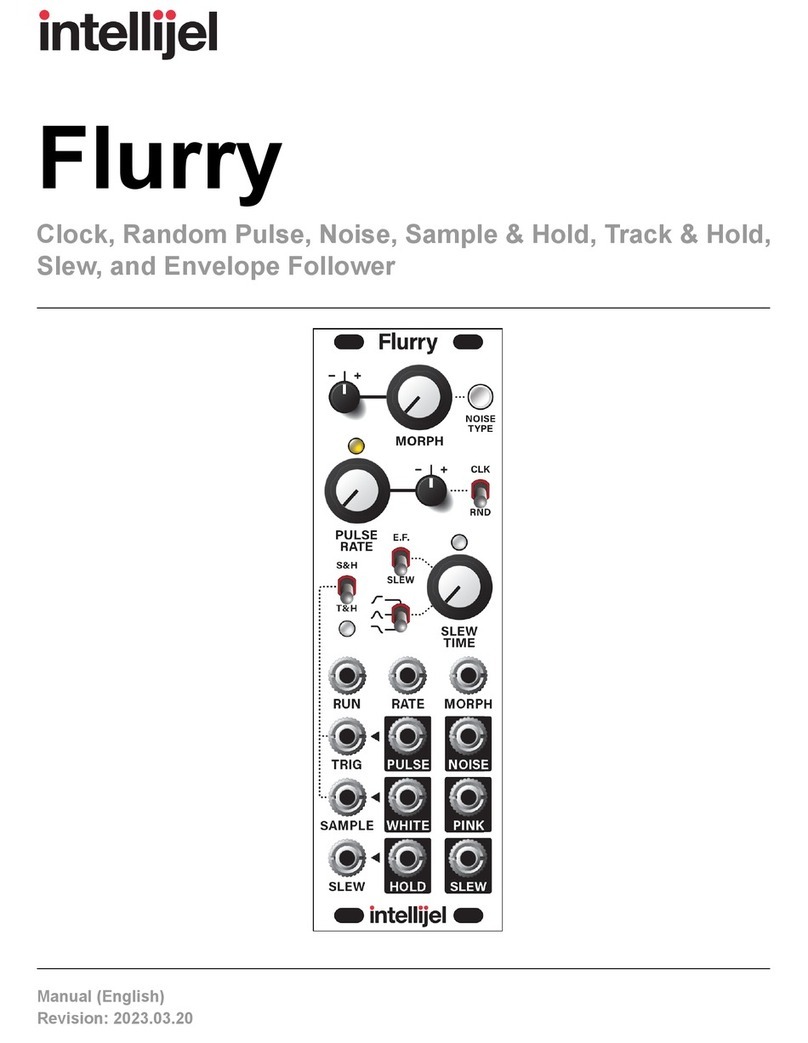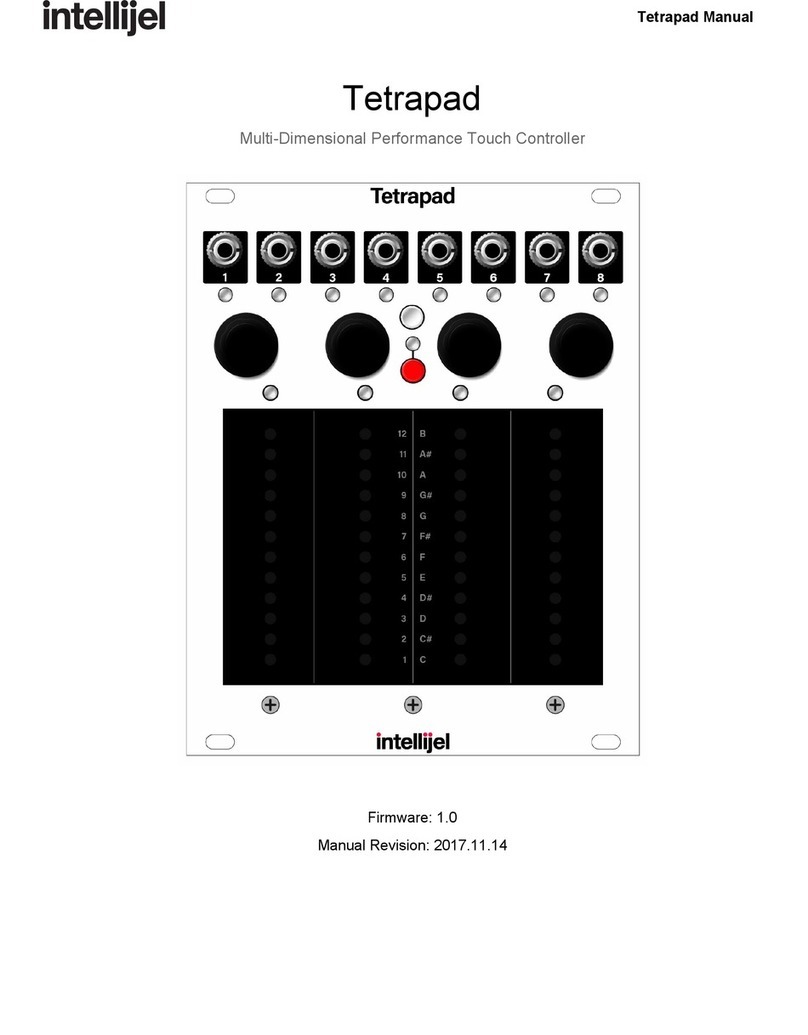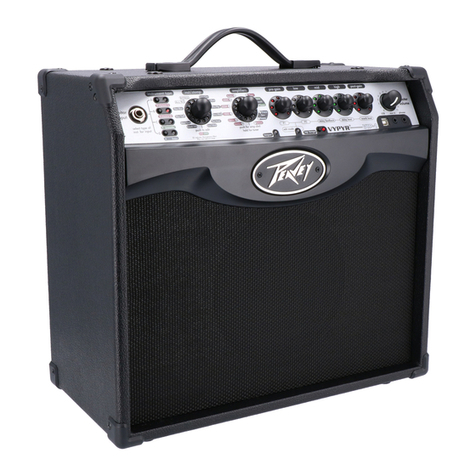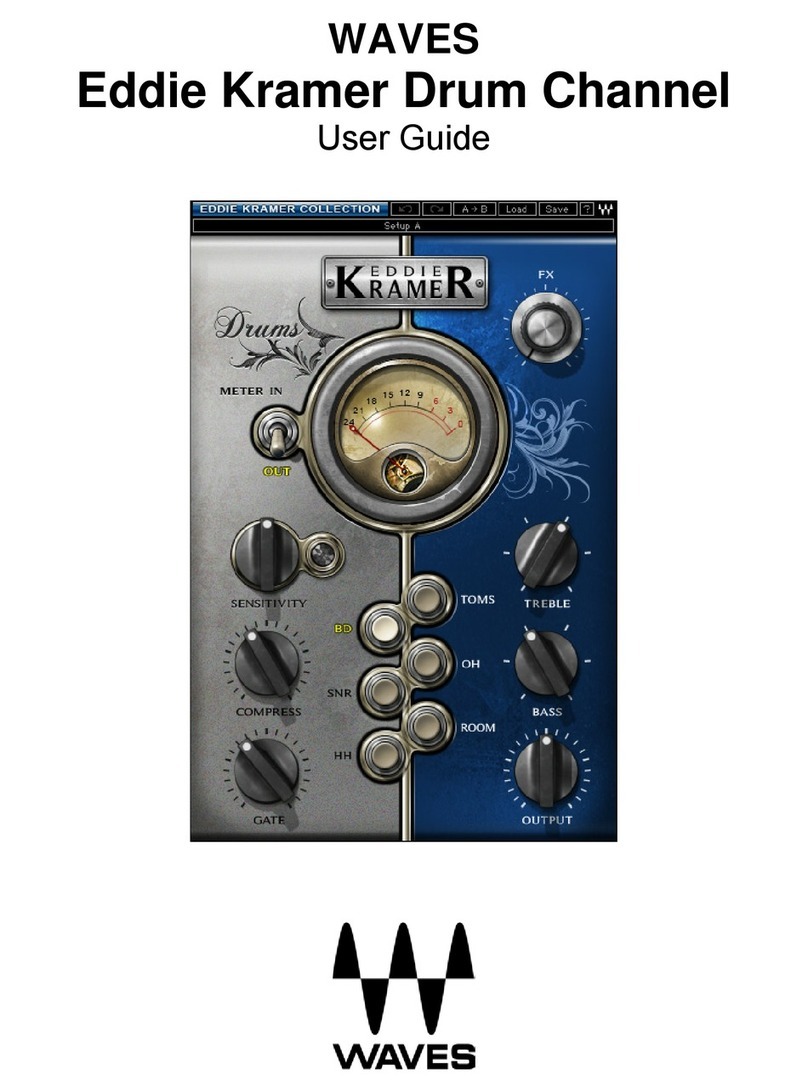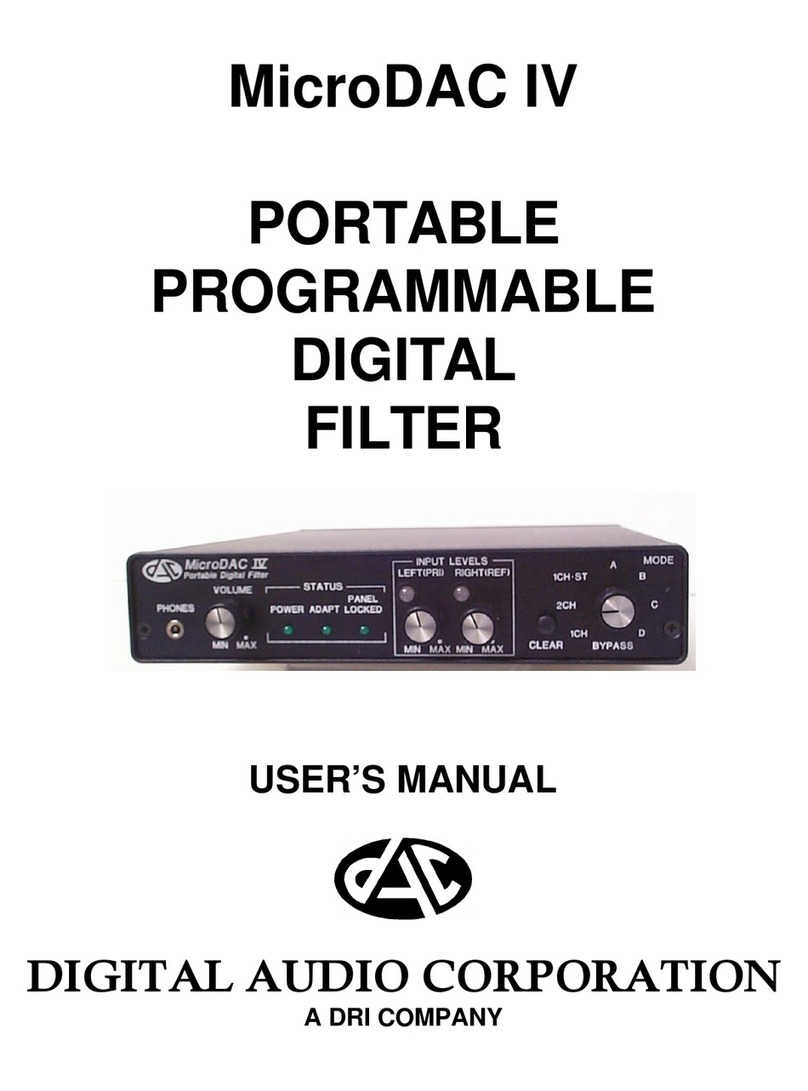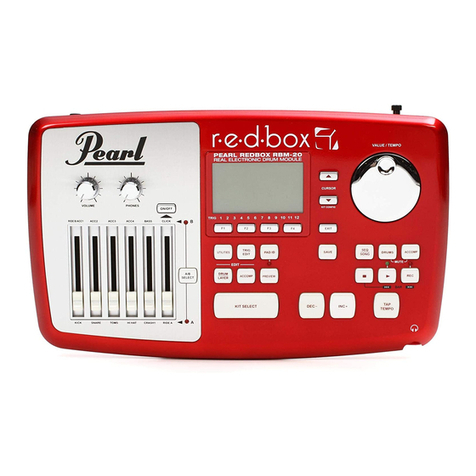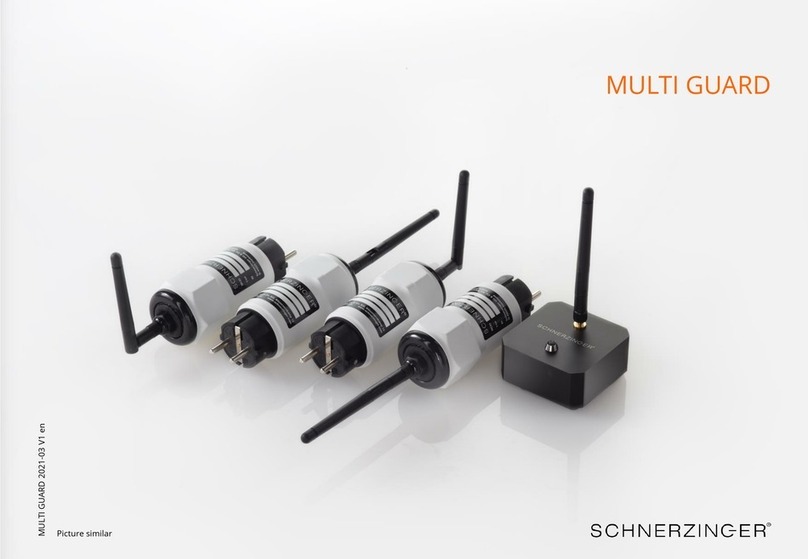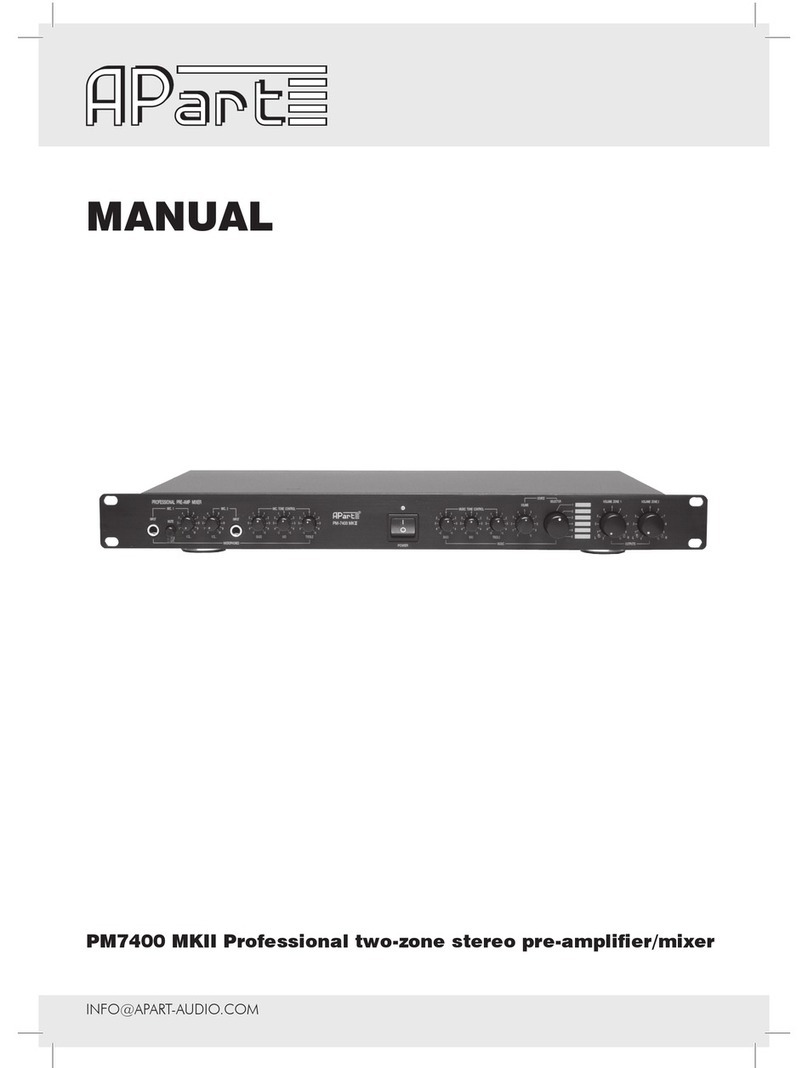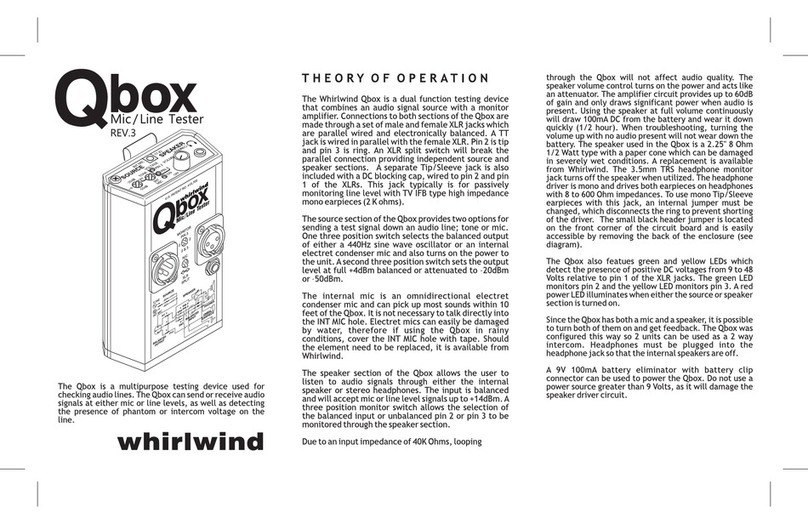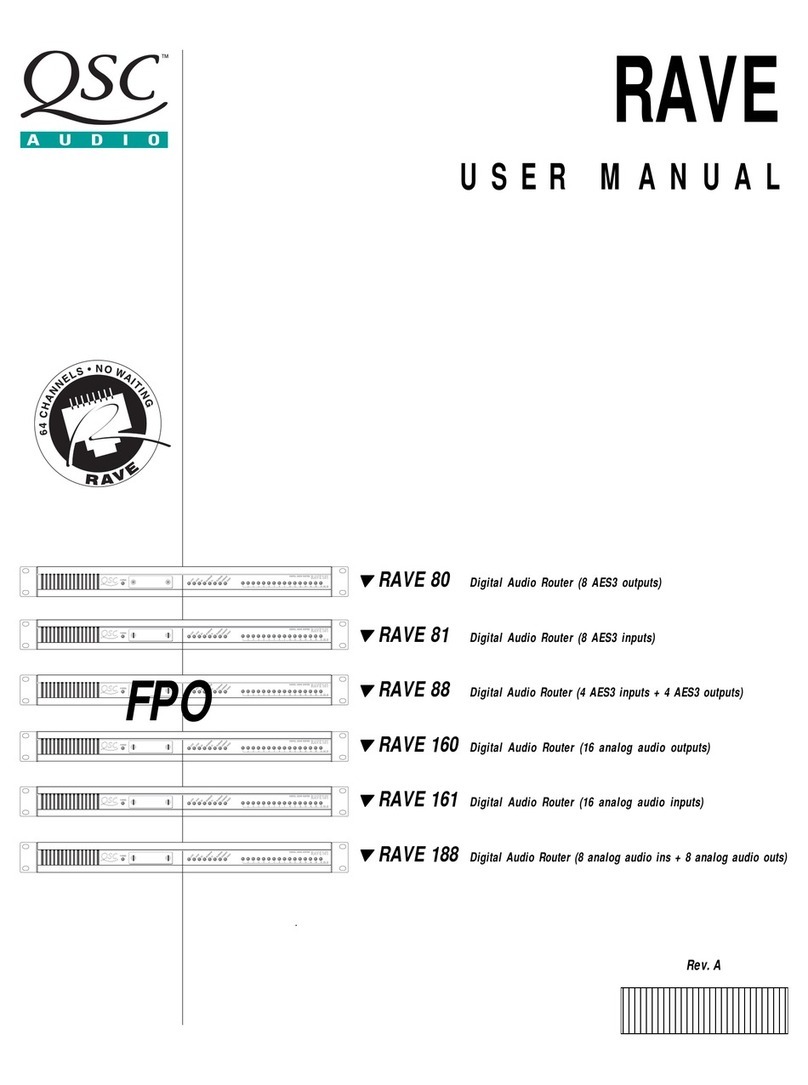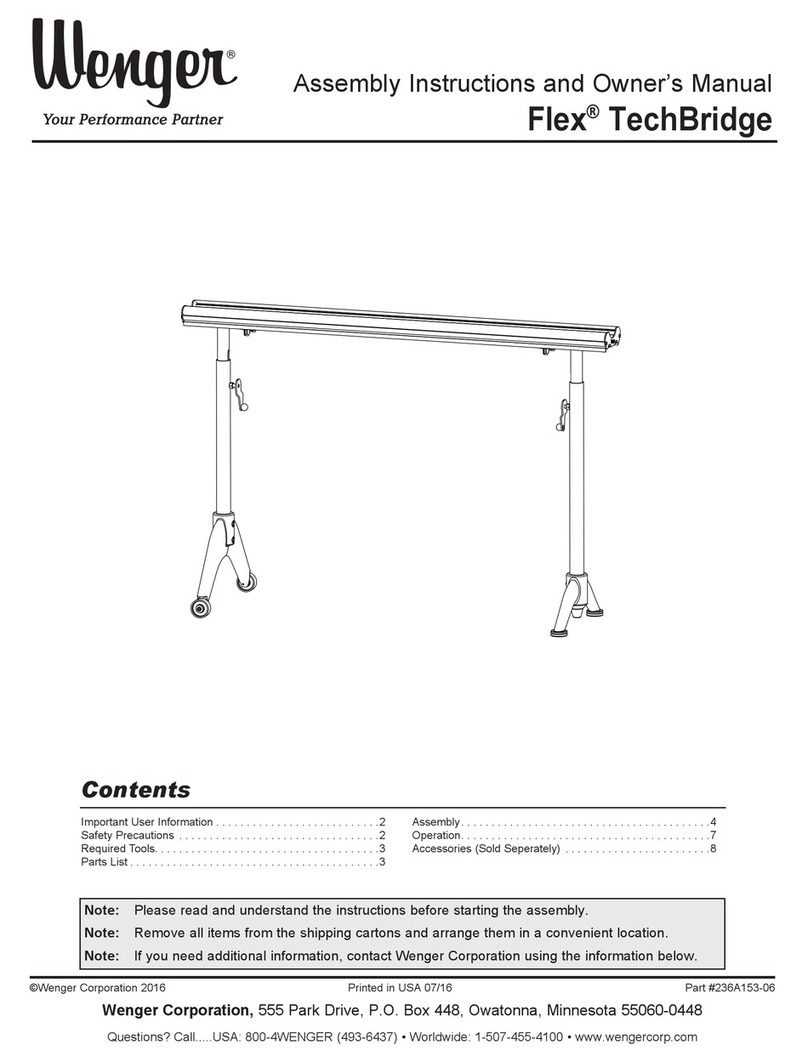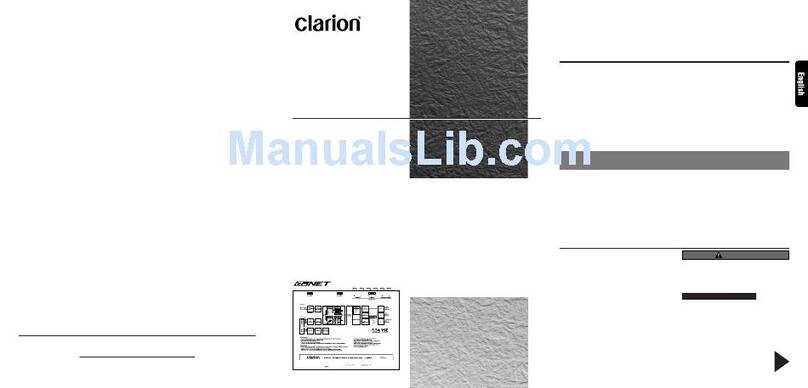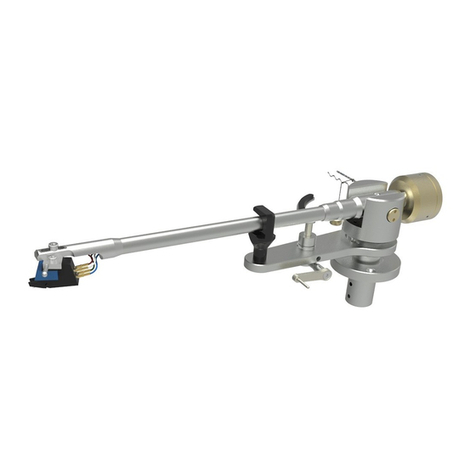Intellijel Multi FX 1U User manual

Multi FX 1U Manual
Multi FX 1U
Clockable Delay, Reverb and Chorus Effect
Manual Revision: 2020.03.02

Multi FX 1U Manual
Compliance
This device complies with Part 15 of the FCC Rules. Operation is subject to the
following two conditions: (1) this device may not cause harmful interference, and
(2) this device must accept any interference received, including interference that
may cause undesired operation.
Changes or modifications not expressly approved by Intellijel Designs, Inc. could
void the user’s authority to operate the equipment.
Any digital equipment has been tested and found to comply with the limits for a
Class A digital device, pursuant to part 15 of the FCC Rules. These limits are
designed to provide reasonable protection against harmful interference when the
equipment is operated in a commercial environment. This equipment generates,
uses, and can radiate radio frequency energy and, if not installed and used in
accordance with the instruction manual, may cause harmful interference to radio
communications.
This device meets the requirements of the following standards and directives:
EMC: 2014/30/EU
EN55032:2015 ; EN55103-2:2009 (EN55024) ; EN61000-3-2 ; EN61000-3-3
Low Voltage: 2014/35/EU
EN 60065:2002+A1:2006+A11:2008+A2:2010+A12:2011
RoHS2: 2011/65/EU
WEEE: 2012/19/EU
Page 2

Multi FX 1U Manual
Installation
This module is designed for use within an
Intellijel-standard 1U row, such as
contained within the Intellijel 4U and 7U
Eurorack cases. Intellijel’s 1U specification
is derived from the Eurorack mechanical
specification set by Doepfer that is
designed to support the use of lipped rails
within industry standard rack heights.
Before Your Start
Intellijel Eurorack modules are designed to be used with a Eurorack-compatible case and power
supply. We recommend you use Intellijel cases and power supplies.
Before installing a new module in your case, you must ensure your power supply has a free
power header and sufficient available capacity to power the module:
● Sum up the specified +12V current draw for all modules, including the new one. Do the
same for the -12 V and +5V current draw. The current draw will be specified in the
manufacturer's technical specifications for each module.
● Compare each of the sums to specifications for your case’s power supply.
● Only proceed with installation if none of the values exceeds the power supply’s
specifications. Otherwise you must remove modules to free up capacity or upgrade your
power supply.
You will also need to ensure your case has enough free space (hp) to fit the new module. To
prevent screws or other debris from falling into the case and shorting any electrical contacts, do
not leave gaps between adjacent modules, and cover all unused areas with blank panels.
Page 3

Multi FX 1U Manual
Similarly, do not use open frames or any other enclosure that exposes the backside of any
module or the power distribution board.
You can use a tool like ModularGrid to assist in your planning. Failure to adequately power your
modules may result in damage to your modules or power supply. If you are unsure, please
contact us before proceeding.
Installing Your Module
When installing or removing a module from your case
always turn off the power to the case and disconnect
the power cable. Failure to do so may result in serious
injury or equipment damage.
Ensure the 10-pin connector on the power cable is
connected correctly to the module before proceeding.
The red stripe on the cable must line up with the -12V
pins on the module’s power connector. Different
modules use different ways to indicate the -12V pins.
Some may be labelled with “-12V;” a white stripe next
to the -12V pins; the words “red stripe;” or some
combination of these. Additionally, some modules may
have shrouded headers, thus preventing backward
connections.
Most modules will come with the cable already
connected but it is good to double check the
orientation. Be aware that some modules may
have headers that serve other purposes so ensure
the power cable is connected to the right one.
The other end of the cable, with a 16-pin
connector, connects to the power bus board of
your Eurorack case. Ensure the red stripe on the
cable lines up with the -12V pins on the bus board.
On Intellijel power supplies the pins are labelled
with the label “-12V” and a thick white stripe:
If you are using another manufacturer’s power
supply, check their documentation for instructions.
Page 4

Multi FX 1U Manual
Once connected, the cabling between the module and power supply should resemble the
picture below:
Before reconnecting power and
turning on your modular
system, double check that the
ribbon cable is fully seated on
both ends and that all the pins
are correctly aligned. If the pins
are misaligned in any direction
or the ribbon is backwards you
can cause damage to your
module, power supply, or other
modules.
After you have confirmed all the
connections, you can reconnect
the power cable and turn on
your modular system. You should immediately check that all your modules have powered on
and are functioning correctly. If you notice any anomalies, turn your system off right away and
check your cabling again for mistakes.
Page 5

Multi FX 1U Manual
Front Panel
Controls
A. FX TYPE switch - 3-way switch determines whether Multi FX functions as a
Reverb ( REV ), Delay ( DLY ) or Chorus ( CHO ).
B. TIME knob - Adjusts the appropriate time-based parameter for either the REV (reverb),
DLY (delay), or CHO (chorus) effect (as selected with the FX TYPE [A] switch), as
labelled beneath the knob. Specifically:
●REV (reverb) Mode - If the FX TYPE [A] switch is set to REV , this knob controls the
reverb’s PRE-DELAY time. Turn the knob clockwise to increase the pre-delay.
In REV mode, this knob is not clocked, meaning both the CLK [5] input and TAP
TIME [C] buttons are ignored.
●DLY (delay) Mode - If the FX TYPE [A] switch is set to DLY , this knob controls the
delay time, and is labelled TIME/DIV .
If the delay is clocked (using either the
TAP TIME [C] button or the CLK [5]
input), this knob sets the rhythmic division
(DIV). Fully clockwise, the delay time
equals the clock time, which is defined as
a quarter note.
As you turn the knob counterclockwise,
the delay becomes dotted-8th notes (around 2:00); 8th notes (around 10:00); and 8th
note triplets (when fully counterclockwise). Note that the TAP TIME [C] button
always flashes on the quarter note, regardless of the TIME [B] knob position.
Page 6

Multi FX 1U Manual
If the delay is unclocked (i.e., the TAP TIME button not flashing), then the TIME [B]
knob sets the delay from 50ms (fully counterclockwise) to 1000ms (fully clockwise) in
several discrete intervals.
● CHO (chorus) mode - If the FX TYPE [A] switch is set to CHO , this knob controls the
chorus RATE (as indicated by the label). Turn the knob clockwise to increase the
chorus rate, and turn it counterclockwise to decrease the rate.
In CHO mode, this knob is not clocked, meaning both the CLK [5] input and TAP
TIME [C] buttons are ignored.
C. TAP TIME button - This button is used only in DLY (delay) mode. Its function is ignored
by REV (reverb) and CHO (chorus) modes.
The button has two different functions:
● Sets Internal Clock Rate - Tap the button repeatedly (at least twice in a row) on the
quarter-note to set an internal clock rate for the delay. If the delay is internally
clocked, the button is half-lit, but blinks brightly every quarter-note.
● Disables Clock - Long-press the button (>1 sec) to turn off the internal clock, allowing
you to use the delay in un-clocked mode (meaning the TIME [B] knob sets the delay
time from 50 ms to 1000 ms in several discrete steps). If the delay is un-clocked, the
button is half-lit but does not flash.
When the CLK [5] input is used, the delay is externally (rather than internally) clocked.
In this situation, the button is unlit, but blinks at half-brightness every quarter note. The
CLK LED [5] also blinks when the CLK input is used). Multi FX 1U will not operate in
un-clocked mode if the CLK input is used.
NOTE: When clocked (internally or externally) the TAP TIME [C] button always flashes
on the clock (quarter-note) regardless of where the TIME [B] knob is set.
Page 7

Multi FX 1U Manual
D. TONE Knob - This knob is active for all three modes, and it controls a simple low pass
filter. Turning it counterclockwise “dulls” the tone by decreasing the high frequency
content. This can decrease the perceived ‘liveliness’ in the reverb, or allow for
increasingly duller ‘taps’ as a delay fades out (as might happen with a tape delay).
E. AMOUNT Knob - The function of this knob changes, depending on the mode you’ve
selected with the FX TYPE [A] switch). The function for each mode is labeled beneath
the knob. Specifically:
●REV (reverb) mode - The knob controls the reverb’s DECAY time. Clockwise =
longer reverbs.
●DLY (delay) mode - The knob sets the number of REPEATS . Clockwise = more
repeats (higher feedback).
●CHO (chorus) mode - The knob controls the DEPTH of the chorus effect.
F. MIX Knob - Sets the amount of Dry vs Wet signal sent to the OUT L [1] and OUT R [2]
jacks. When fully counterclockwise, only the dry, unaffected signal is sent to the outputs.
When fully clockwise, only the wet, fully-effected signal is sent to the outputs. When set
to the noon position, equal amounts of wet and dry signal appear at the outputs.
Page 8

Multi FX 1U Manual
Inputs & Outputs
1. OUT L - Left output jack. Some effects are stereo and some are mono. See below.
2. OUT R - Right output jack. Some effects are stereo and some are mono. Specifically:
●REV (reverb) Mode - The reverb effect is stereo. Should you wish to output a mono
reverb signal, simply connect to either the OUT L or OUT R output.
●DLY (delay) Mode - The delay effect is mono, so the OUT L and OUT R output
signals are identical.
●CHO (chorus) Mode - The chorus effect is stereo. Should you wish to output a mono
chorus signal, we recommend connecting both the OUT L and OUT R jacks to a
mixer (such as an Intellijel Mixup module), and summing the channels to mono that
way. Because of the phasing offsets applied to the left and right outputs, this method
will result in a richer, more pleasing mono chorusing effect. However, you can also
connect a single output, if that’s the sound you prefer.
3. IN L - Left input (if running a stereo signal into Multi FX) or mono input (if using Multi FX
as a mono effects module).
4. IN R - Right input (if running a stereo signal into Multi FX). This jack is normalled to the
IN L [3] jack, so if nothing is plugged into the IN R jack, then a duplicate of the left input
signal appears here.
NOTE: The Left and Right inputs are summed to mono prior to being sent into the
effects processor.
5. CLK IN (and LED) - This jack is used only in DLY (delay) mode. It’s ignored by REV
(reverb) and CHO (chorus) modes.
A clock patched into this jack defines the value of a quarter-note in DLY (delay) mode. It
overrides any internal clock rate set previously with the TAP TIME [C] button. Also, if
Page 9

Multi FX 1U Manual
MULTI FX 1U is currently set to un-clocked mode, patching into the CLK jack will
automatically turn clock mode on.
The actual delay time is based on this input as well as the clock division set by the
TIME/DIV [B] knob.
The CLK input has an associated LED, which blinks in time with the clock input,
regardless of the TIME/DIV knob position.
Technical Specifications
Width
24 hp
Maximum Depth
33 mm
Current Draw
130 mA @ +12V
12 mA @ -12V
Page 10
Table of contents
Other Intellijel Music Equipment manuals


